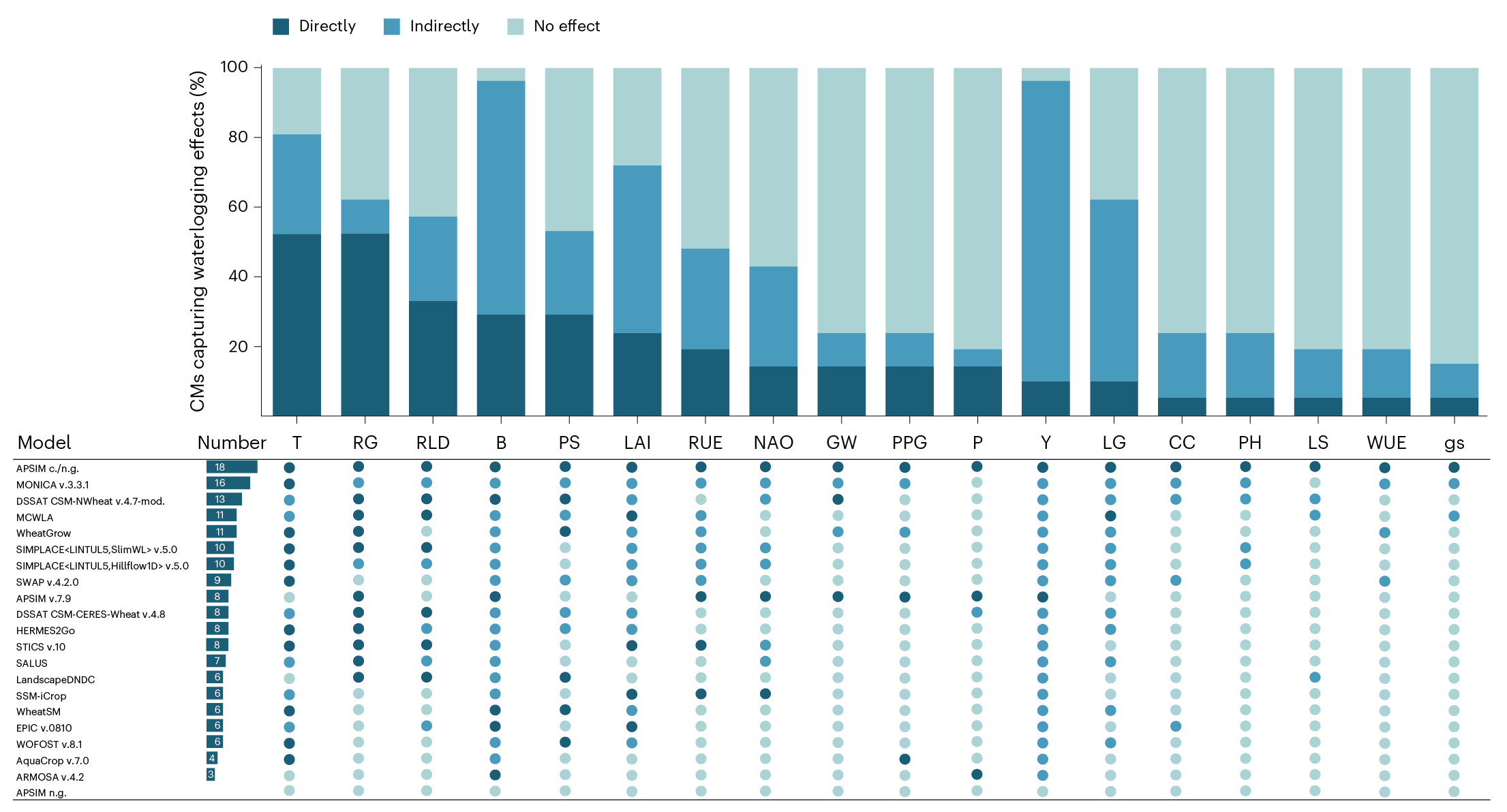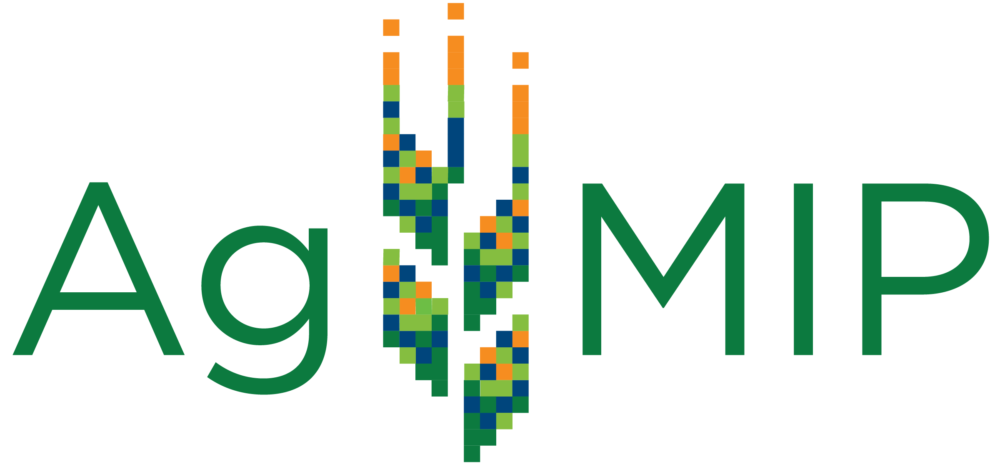New paper by AgMIP-Wheat Team conducts model intercomparison assessing current approaches of simulating crop response to waterlogging
By Natalie Kozlowski
23 September, 2025
Soil waterlogging occurs when excess water saturates the soil over an extended period. Due to anoxia, nutrient losses, and physical issues such as compaction, soil waterlogging is often detrimental to crop growth. Waterlogging impacts 27% of cultivated lands globally each year. Key wheat-producing regions, including China, India, the U.S. Midwest, and France, have experienced yield losses due to waterlogging in recent years. Climate change, including increased prevalence of severe rain events, will alter the frequency and severity of soil waterlogging in the world’s dry and wet regions. This will have major implications for farmers and global food security.
Soil waterlogging is not typically included in agricultural climate change impact assessments, with higher priority placed on studying other extreme weather phenomena, such as drought and heat. Over a decade ago, several AgMIP researchers published a paper calling for improvements in the capabilities of crop models to simulate crop response to waterlogged soils. A few studies have since been published that strengthen this area of research, but more work is needed.
A new AgMIP paper in Nature Food conducted a global model intercomparison and improvement study to assess the capacity of current approaches in crop model simulations related to waterlogging. The study analyzed 21 global wheat models (see complete list of models in Figure 1 below) to identify gaps in the representation of waterlogging-related processes and to outline a way forward for enhancing the predictive capacity of crop models and their ability to inform strategies for adapting to waterlogging.

Figure 1. Processes relating to waterlogging that are captured in crop models.
Figure 1 highlights the waterlogging-related processes typically captured in crop models. Processes that are more represented are shown toward the left end of the x-axis; representation decreases as you move right on the x-axis. Processes represented in 50% of examined models include crop transpiration (T), root growth (RG). Alternatively, processes represented in less than 5% of models include canopy cover (CC), plant height (PH), leaf senescence (LS), water use efficiency (WUE), and stomatal conductance (gs).
Garcia-Vila et al. note that there is no single crop model that fully captures all processes and mechanisms involved in simulating crop growth and production under regular waterlogging. By improving the depiction of soil water dynamics in crop models, the capability to identify site-specific adaptation strategies will also improve, such as the integration of cover crops, the use of raised beds, the implementation of precision agricultural practices, or farming by stability zones. This improved depiction will also open the door for increased use of aquifer recharge in agricultural regions as a nature-based solution.
To work towards a more integrated and improved representation of waterlogging processes in crop models, the authors call for collaboration among different modeling groups and scientific disciplines, including plant physiology, hydrology, soil physics, soil ecology, and biogeochemistry. They also note that this work should be co-created alongside the requirements of field management at the farm scale and calibrated using real data from field experiments. A considerable challenge for improving the models is the lack of observed data (Nóia et al. 2023).
The call to research action in Garcia-Vila et al. aims to reach a better understanding of how global wheat yields will be affected by the projected and already observed increase in severe rain events, and how farmers can anticipate and respond through their management practices. This work is an important element in the AgMIP Community’s efforts to more completely capture biophysical responses to geohazards that shape current and future challenges for agricultural and food systems.
Additional Resources:
Read Garcia-Vila et al. in Nature Food: https://www.nature.com/articles/s43016-025-01179-y
Related Literature:
Boote et al. (2013) in Plant, Cell & Environment: https://onlinelibrary.wiley.com/doi/10.1111/pce.12119
Nóia et al. (2023) in Agricultural Water Management: https://www.sciencedirect.com/science/article/pii/S0378377423001993?via%3Dihub
Liu et al. (2023) in Nature Communications: https://www.nature.com/articles/s41467-023-36129-4
Author Contact Info:
Margarita Garcia-Vila (mgarcia-vila@ias.csic.es)
Taru Palosuo (taru.palosuo@luke.fi)
Matthew Harrison (matthew.harrison@utas.edu.au)
